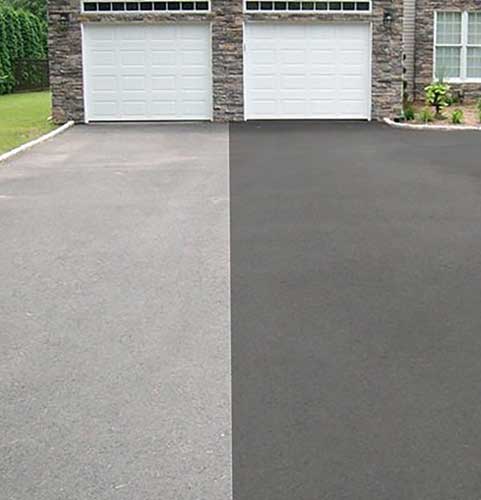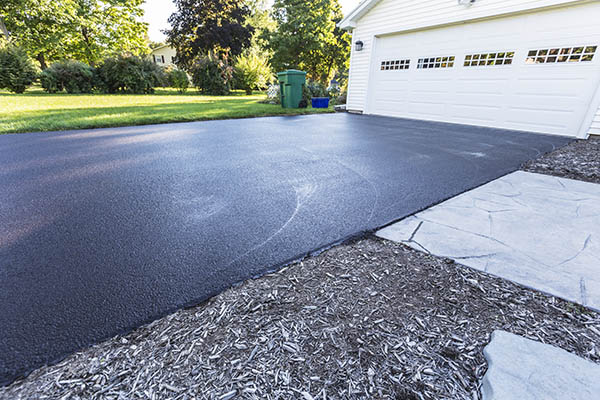Boost Durability with Cold Mix Asphalt: Expert Sealing Solutions
Boost Durability with Cold Mix Asphalt: Expert Sealing Solutions
Blog Article
Cold Mix Asphalt Vs. Hot Mix Asphalt: Which Is Right for You?

Composition Differences
Cold mix asphalt is generated by emulsifying the asphalt binder with water and an emulsifying agent before mixing it with aggregate. The hot mix asphalt production process entails warming the aggregate and asphalt binder independently prior to integrating them at the asphalt plant.
Moreover, chilly mix asphalt often tends to be much less dense and much more versatile than warm mix asphalt. This versatility makes it far better matched for locations with greater degrees of motion, such as driveways or roads with heavy website traffic. In contrast, warm mix asphalt is understood for its high durability and resistance to rutting and fracturing, making it a recommended selection for highways and high-traffic roadways where longevity is crucial.
Installation Process Variations
The process of setting up cool mix and warm mix asphalt exhibits remarkable variances in their needs and treatments. Cold mix asphalt, being a more versatile material, can be used straight from the bag or container onto the fracture or harmed area. It calls for very little preparation job, such as cleaning up the area and condensing the cool combine with hand devices. This makes it a practical option for fast and short-lived solutions. In comparison, warm mix asphalt requires a much more intricate setup procedure. It includes heating up the mixture to high temperatures before laying it down on a correctly ready base. The preparation includes compacting the base, applying a tack layer, and making use of heavy equipment like pavers and compactors for a smooth and sturdy surface. As a result of the heating demands, warm mix asphalt setups are commonly accomplished by specialists with specific devices, guaranteeing a more structurally sound and permanent outcome.
Sturdiness and Durability Elements
When taking into consideration asphalt options, sturdiness and long life are crucial variables to examine for lasting sidewalk performance. Hot mix asphalt (HMA) is recognized for its extraordinary durability and durability.
In terms of longevity, HMA usually surpasses CMA due to its exceptional strength and resistance homes. HMA sidewalks have a longer life span, calling for much less frequent repair work and upkeep, which can translate to cost financial savings in the lengthy run. Furthermore, HMA sidewalks are a lot more conveniently customizable to fulfill particular task demands, better enhancing their durability.
Expense Factors To Consider
Thinking about the economic ramifications is an important element when assessing the choice in between warm mix asphalt (HMA) and cool mix asphalt (CMA) for sidewalk jobs. While the first price of warm mix asphalt is commonly higher than that of chilly mix asphalt, HMA often provides a more economical solution in the lengthy run due to its premium longevity and durability. HMA is recognized for its capacity to withstand rush hour lots and rough climate conditions, reducing the need for constant repair work and upkeep. On the other hand, cold mix asphalt is extra inexpensive upfront but may need even more constant patching and resurfacing, causing higher maintenance costs gradually.
In addition to material prices, it's necessary to think about the expenditures connected with setup and maintenance when contrasting HMA and CMA. HMA typically needs specialized devices and knowledgeable labor for appropriate setup, which can impact general task costs. On the other hand, CMA is much easier cold mix asphalt to collaborate with and can typically be applied using simpler strategies, potentially reducing setup expenses. Eventually, the choice in between HMA and CMA must consider not simply the initial price yet also the long-lasting economic implications to determine the most cost-effective option for the specific sidewalk task.
Environmental Impact Contrast
Comparison of the ecological impacts in between warm mix asphalt (HMA) and cool mix asphalt (CMA) discloses unique distinctions in sustainability practices. HMA manufacturing calls for heats, causing boosted energy usage and greenhouse gas exhausts. The procedure likewise releases volatile organic compounds (VOCs) and harmful air contaminants (HAPs) right into the environment. On the other hand, CMA is generated and used at reduced temperature levels, minimizing power use and emissions significantly. The reduced production temperatures of CMA result in reduced fuel intake and lower levels of carbon dioxide exhausts, making it an extra environmentally pleasant alternative.
Furthermore, using CMA typically involves reusing existing asphalt sidewalk, promoting resource conservation and minimizing the quantity of waste sent to landfills. This recycling aspect even more improves the sustainability of CMA contrasted to HMA. Overall, when considering the ecological impact, CMA emerges as an extra ecologically sustainable choice as a result of its lower power needs, minimized exhausts, and the potential for reusing existing products. By selecting CMA over HMA, roadway building and construction jobs can contribute positively to environmental preservation efforts.
Conclusion
To conclude, the selection in between cool mix asphalt (CMA) and warm mix asphalt (HMA) depends upon numerous factors such as make-up, installment process, longevity, durability, price, and environmental impact. asphalt patch repair. While CMA offers a fast and cost-effective service for small fixings, HMA makes certain remarkable longevity and long life for rush hour locations. Think about these factors very carefully to determine which kind of asphalt is the appropriate option for your paving needs

Considering the monetary effects is a crucial aspect when reviewing the selection between warm mix asphalt (HMA) and cold mix asphalt (CMA) for sidewalk jobs. While the initial price of hot mix asphalt is normally greater than that of cool mix asphalt, HMA commonly offers a much more cost-effective service in the long run due to its remarkable durability and longevity. cold mix asphalt.Comparison of the environmental effects in between warm mix asphalt (HMA) and cool mix asphalt (CMA) discloses unique distinctions in sustainability techniques.In conclusion, the option between cool mix asphalt (CMA) and hot mix asphalt (HMA) depends on different aspects such as composition, setup process, resilience, durability, expense, and ecological impact
Report this page